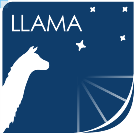
To observe in the spectral range of the LLAMA it is necessary to install the equipment in specially complex sites (in particular at very high altitudes to avoid the influence of water vapor on observations). For this reason, we know little about the Universe observable in these frequencies (milimeter/submilimeter wavelengths). Thus, it is expected that the astronomical community will have access to a new facility whose observations will result in scientific works of high impact. The possibilities will be expanded when the LLAMA was able to operate with ALMA and other radio telescopes in Very Long Baseline Interferometry (VLBI) observations. In this way, observations can be obtained with spatial resolution up to ten times larger than the ALMA operating alone.
The research that will be developed with LLAMA has been discussed with the Argentinean and Brazilian astronomical communities mainly through the LLAMA Science Workshop, an event that has had two editions, in 2015 and 2017.
Three main scientific areas were selected as guides for LLAMA’s development: black holes and their accretion discs, molecular evolution of the Universe and its connection with astrobiology and the spiral structure of the Galaxy. However, many other research areas will benefit from the use of the LLAMA radio telescope, both in single dish observations and in interferometric networks. Some examples are listed in the following list.
Galaxies
* Active Galactic Nuclei (AGN);
* Search for CO in galaxies with high redshift; * Molecular abundance;
* Variation of the fundamental constants by the observation of gravitational lensing;
* High redshifts of regions with high rate of star formation;
* Proto-clusters of galaxies;
* Supermassive black holes, particularly through participation in the EHT.
Astrophysical jets and maser emission
* Astrophysical jets;
* Maser phenomena of the recombination lines of the hydrogen atom;
* Maser emission in star-forming regions;
* Maser emission in late stars stellar envelopes.
High energies
* Search for counterparts of gamma-ray sources detected with the future array of Cherenkov telescopes (CTA - Cherenkov Telescope Array).
Galactic and Intergalactic interstellar medium
* Continuum radiation from extragalactic cold dust;
* Molecular material in the direction of different stellar objects;
* Intergalactic Medium using the detection of molecular absorption lines in the direction of quasars;
* Cosmic background radiation.
Stellar objects
* Star forming regions, young stellar objects, and mechanisms of the star formation;
* Non-thermal processes in stellar magnetospheres;
* Interaction of stars and remnants of supernova with the interstellar medium.
Planets
* Extra-solar planetary systems around stars near the Sun;
* Proto-planetary disks.
The Sun
* Structure of the lower solar atmosphere;
* Active and quiescent filaments;
* Solar flares;
* Dynamics of the chromospheres and its magnetic field.